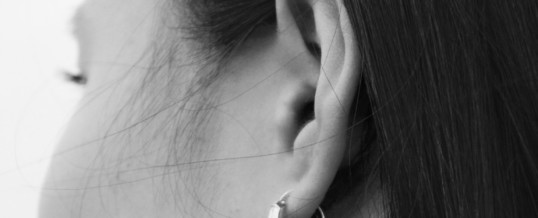
You may have heard people talk about the ear in three parts: the outer ear, the middle ear, and the inner ear. But have you ever wondered why there are three parts in the first place? Why not just attach a nerve to the eardrum and call it good? The answers to these questions might surprise you.
While each part of the ear has an important function, in this post we are going to explore the superpowers of the outer ear.
The outer ear—which consists of the pinna and the ear canal—is the entryway for sound into your head. The pinna (also called the auricle) is the cup-like part of the ear that acts like a funnel, channeling sound. Because the pinnae (plural form of pinna) are angled forward, sound from the front is caught more easily than sound from the back, especially for high frequencies. On a side note, the word pinna comes from Latin and means wing, although most animals do not try to fly with their ears (except in the case of certain animated elephants.)
The ear canal, which is a tube about 2.5 cm long and 0.7 cm in diameter, serves a couple of purposes. The first is that the slight bends in the ear canal help keep unwanted objects from reaching the sensitive skin of the ear drum. This is good news for your health, but frustrating when your pinkie finger doesn’t quite reach the water stuck in your ear.
The second is that the ear canal acts as a resonator and amplifier at frequencies of 3–4 kHz, which are key to human speech. If you model the ear canal as an open-closed tube (which is not a bad model), this makes sense. For an open-closed tube, the fundamental resonance is found using this equation:
![]()
In this equation, ![]() is the speed of sound and L is the length of the tube. Substituting in typical values (
is the speed of sound and L is the length of the tube. Substituting in typical values (![]() and
and ![]() ) you find that the fundamental frequency of the ear canal is about 3.43 kHz, right in the middle of the expected 3–4 kHz range.
) you find that the fundamental frequency of the ear canal is about 3.43 kHz, right in the middle of the expected 3–4 kHz range.
The outer ear terminates at the tympanic membrane, popularly known as the ear drum. We’ll talk about the ear drum more later. For now all you need to know is that yes, the tympanic membrane is essentially a tiny drumhead in your ear. It is very sensitive to vibration and damage to it can be extremely painful. This, combined with the fact that the skin in your ear canal grows like a fingernail from the depths to the exterior, explains why you shouldn’t use cotton swabs to clean your ear. Not only do you run the risk of damaging the ear drum with abrasive poking and prodding, you can impact dead skin and ear wax inside your ear canal rather than letting it naturally grow outwards.
If you are worried about an obstruction in your ear or the health of your ear drum, it is best to seek qualified medical help. If the problem is minor, your primary care physician should be able to help you. Or he or she will refer you to a specialist like an audiologist (ear doctor) or an otorhinolaryngologist (ear, nose, and throat doctor.)
So, in summary, what are the superpowers of the outer ear? It is one part catcher’s mitt —to capture sound, one part radio tuner—zeroing in on frequencies you want to hear, and one part shield—protecting the vibrating tympanic membrane.
Pretty cool, right? Let’s move on to next part of ear: the middle ear.
Further Reading
https://en.wikipedia.org/wiki/Outer_ear
https://www.who.int/occupational_health/publications/noise2.pdf
JUL
2019

About the Author: